Dragon Sim-13 tgb-2 Read online
Page 2
With that last comment, Meng turned and strode out of the room. He was waved through by the various security guards manning every corridor of the underground complex. Built next to the sprawling new headquarters for the National Security Agency at Fort Meade, Maryland, the "Tunnel," as it was referred to by those who worked there, was actually a series of three major tunnels approximately 180 meters long by 60 meters wide. The main tunnels were connected by two cross tunnels at either end, which were basically corridors. Tunnel 3, the one Meng was just leaving, was the most secure and housed the mainframe computer that was Meng's brainchild. It was also the room where the strategic mission simulations, commonly called Strams, were conducted.
Tunnel 2, where Meng was heading, held the offices of the computer experts whom Meng controlled. Meng's own office, at the north end, was blocked off from the rest of the Tunnel by a thick cinder-block wall. Tunnel 1, to the east, was the outer tunnel, the workplace of the military staff officers who helped translate the various operations plans for the Strams.
Meng slammed the door behind him and sat down at his desk. The office was dominated by a series of large flat tables, arranged in a circle about his desk. It was on these tables that Meng laid out the flowcharts for every Strams exercise. He normally labored over the specific programming of every mission for at least two days.
Strams had a history that spanned almost a decade. Until Meng came along, it existed only as a concept in the mind of an idealistic army chief of staff in the Pentagon during the early 1980s. This chief of staff had watched what his own service was doing at Fort Irwin, California, and wondered if the same thing couldn't be done at the strategic level, particularly to test command and control structures.
At Fort Irwin, the army had developed a massive simulation of armored combat against a Soviet foe. The complex, called the National Training Center (NTC), was designed to approximate the conditions of mobile, armored combat as closely as possible, short of actual war. Every single soldier, vehicle, and aircraft at the NTC was equipped with a system of laser emitters and detectors that simulated the action and effect of the various weapon systems. Two battalions of American soldiers were stationed at Fort Irwin full-time to act the roles of the Soviet forces. These units used Soviet tactics, had vehicles that looked like Soviet vehicles, and in general acted like the enemy. The army NTC system, in fact, had been copied from the air force Red Flag program, in which a flight detachment simulated Russian aircraft and engaged in mock combat with American pilots.
Even more importantly, at the NTC every vehicle and major weapon system was tracked by a computer, which then correlated the results so that in the aftermath of a confused desert battle, the participating commanders could sit down with observer-controllers and analyze the battle step by step with computer printouts and videos. The NTC program had proven invaluable for training armored and mechanized infantry task forces up to brigade level — so invaluable that a similar setup for light infantry units had been subsequently located at Fort Chaffee, Arkansas, and designated the Joint Readiness Training Center (JRTC).
The chairman had designated a task force made up of a few officers and directed them to set up a strategic training center. Part of the impetus for this task force had also been the after-action reports on the Desert One failure and on the less-than-perfect invasion of Grenada. There was a glaring need to test the U.S. military's ability to conduct strategic missions requiring high-level command and control. The truth of the matter was that the ability to test the plans and the capability of the commanders and staff diminished rapidly the higher the chairman looked on the U.S. military strategic ladder. The ability and reactions of a tank crew commander or a jet pilot in simulated combat could be tested relatively well, but there were no means to test the abilities and reactions of high-level commanders and staff.
The early Strategic Simulation Task Force pondered the situation for more than a year. Doctor Meng had been invited to participate when it became increasingly obvious that such a strategic training center was going to have to rely heavily on computer simulations. Meng had a long history of consulting with the Department of Defense (DOD). He had been teaching computer programming at the Massachusetts Institute of Technology (MIT) for almost eighteen years and was internationally recognized as one of the three top computer simulation programmers in the world. Initially Meng had been told that he would be needed only for six months to get the program started. Those first six months had dragged on to two years as Meng had wrestled with the myriad variables required to be programmed into such a system.
Working out of two offices, with only one assistant and a secretary to help him, Meng had attacked the problem from several angles. He'd looked at the NTC system and extracted those parts he deemed useful. Meng also looked at another army program called ARTBASS, a tactical-level computer simulation program designed to test commanders and staffs below division level. It consisted of a building where the various unit commanders and their staff were placed in separate simulated field headquarters and communicated with each other by radio. They were allowed to see only the part of an electronic battlefield that their actual immediate units would occupy. The computer simulated the effects of various engagements between the American units and a computer-generated Russian enemy. Meng realized that he was being asked to construct a strategic-level ARTBASS. The difficulty in doing so lay in the fact that at the strategic level the number of variables affecting outcomes increased geometrically to an almost unmanageable number.
The factor Meng had discovered from studying both the NTC and ARTBASS simulations was that communications would be the cornerstone to any scenario. At the strategic level the commanders and staff never saw the face of battle. They worked entirely with electronic inputs and outputs connecting them with the forces that would execute the mission. Meng believed that he could simulate those inputs and outputs.
Meng visualized a building where the commander and staff to be tested would be isolated. All messages and data traffic would be run in and out through the computer, allowing Meng's program to control the action. After outlining this idea to the chairman, Meng was invited to tour the Pentagon's Emergency Operations Center (EOC), the nerve center for any strategic operation conducted by U.S. military forces. Meng was not surprised to find that the EOC was a data and communications hub very much like what he had proposed.
After two years of struggle, Meng had completed an outline of Strams. By that time the army chief of staff who had authorized the project in the first place had retired, and Meng was faced with all of his work languishing. Meng would not have minded except that he had been drawn into a security quagmire. He could get out of Strams but his work could not. The entire project had been conducted under such a high level of security that every computer program and piece of paper was highly classified. Meng would never be able to use his work in the civilian computer world. Additionally, Meng had found himself increasingly drawn into the challenge of making his simulations more and more realistic. War is perhaps the most chaotic of man's ventures, and trying to simulate it was the greatest programming challenge.
Faced with the prospect of the project being disbanded and having his work lost, Meng had seized an opportunity to breathe life into his creation. During the Libyan crisis, Meng was tasked to war-game the retaliatory missions proposed by the various services. Using borrowed computer time, he ran through the various strike missions and sent his results to the chairman of the Joint Chiefs of Staff. The resulting bombing raid on Tripoli so closely matched what Meng had predicted that interest in Strams was revived. With the blessing of the secretary of defense, work on the facility had begun. The Tunnel, built to approximate the Pentagon's EOC as closely as possible, was placed at Fort Meade to have access to both the vast intelligence system at the National Security Agency and the communications facilities controlled by that organization.
The initial series of Strams exercises in the Tunnel was conducted in 1987. Dubbed Bear Sim-1 through Bear Sim-23, the
exercises had focused entirely on military actions against the Soviet Union, ranging from selective nuclear strikes to military, economic, and political sabotage of the Soviet infrastructure by surgical strike missions. Meng continually refined the simulation as he learned what worked and what did not. After ten missions, the entire setup had become so realistic that the secretary of defense had designated the Tunnel as the alternate EOC in case the Pentagon center went off line.
Meng had been forced to run the Strams in sequence using the same target country because of the difficulty designing the opposing forces (OPFOR), or enemy, program of capabilities and possible responses. That overall country program was called the scenario program. The one for the Soviet Union Meng had labeled as Bear. The various U.S. military scenarios based on contingency oplans, or operations plans, were the numbered Sim programs.
When the Bear Sim programs had run their course, Meng was ordered to turn his attention elsewhere. He had then run four scenarios in the Middle East — Lion Sim-1 through Lion Sim-4. At that point, in the fall of 1988, he had been directed to scenario-program a new target country: China.
Meng labored for more than two months to develop the Dragon scenario program. The first Dragon Sim took place in January 1989. Since then the Dragon series, and the whole Strams program, had been receiving less and less attention as peace prevailed around the world. To revive the project, Meng wanted to switch its emphasis to terrorism or to the drug war, and indeed after the two Dragon Sims remaining on the long-range planning calendar, the focus would shift to international terrorism.
Meng was finding scenario programming for the new Medusa series to be most challenging. Since it took more than two months to program a new scenario, he had requested that the last two Dragon missions be scrubbed to allow them to concentrate on the Medusa program, but General Sutton had overruled his civilian counterpart. The units participating had already prepared their operations plans and scheduled the operation. Meng had learned early in this job that the military was not very flexible in its operations.
Meng looked at his calendar. Dragon Sim-13 was starting in two days. The oplan sat in his in box. He hated the thought of flowcharting this exercise, since he wanted to get a jump on the Medusa program. He was finding the new program most interesting, considering the number of terrorist organizations in the world and the almost innumerable ways they might act. It was his greatest challenge yet.
Meng grabbed the oplan for Dragon Sim-13 and glanced through it. An army Special Forces mission, he noted — at least it would not be boring. He'd enjoyed the one Bear Sim mission with the Special Forces people. They had shown quite a bit of imagination in their planning and flexibility in their responses to the challenges presented by the computer, unlike many of the other organizations that had been run through Tunnel 3.
Meng began separating the pages of the oplan, preparing to lay them out on his tables and begin the program flowcharting. He would let his primary assistant, Ron Wilson, do the after-action report for Dragon Sim-12. Meng didn't want to have to deal with that obnoxious air force general anymore. Besides, the sooner he got 13 and 14 out of the way, the sooner he could work on his Medusa program.
Meng glanced at his watch — nearly 4 p.m. He pulled the remote control out of his desk drawer, flicked on the color TV mounted on the far wall of his office, and flipped through the channels until he got to CNN. As the CNN logo rolled across the screen, Meng put aside his work and walked over to stand right in front of the TV. The lead story, as he had hoped, was on the one subject that concerned him more than his work. The screen was filled with the image of the Goddess of Democracy overlooking the hordes of students filling Tiananmen Square in Beijing.
Meng felt his heart catch as he viewed the spectacle. It was a sight he had never expected to see in his lifetime. Moving even closer to the screen as the camera panned the ranks of the students, he tried to examine every face as the camera swept along the sea of protesters. With foreboding Meng listened carefully to the announcer. "There have been unconfirmed reports that elements of the 38th Army have moved into positions around the city of Beijing. Whether these reports are true is not known, nor is it known whether the government will use these troops in an attempt to abort this movement that has been going on for more than seven weeks now."
Meng was aware that someone else had come into his office. He didn't let the new presence distract him as the report continued. "So far, things have been calm. The troops that have been stationed around the square have reacted in a peaceful, almost friendly manner to the crowds."
Meng turned his attention away as the story shifted to some self-proclaimed American expert discussing the situation. Meng didn't need an expert to tell him what was going on. He looked over as Ron Wilson spoke out. "Sort of makes you feel hopeful, doesn't it?"
Meng shook his head. "It fills me with fear more than hope."
Wilson looked at his colleague in surprise. That was the most emotional statement he had ever heard the normally stoic Meng utter. "You don't think this will get resolved peacefully?"
Meng shrugged. "I cannot foresee the future. But I do know that those Old Men in charge will not bow to the desires of a group of students."
"But isn't the entire country behind the students?"
Meng tended toward a more cynical attitude of human nature. He knew that the students and the others with them in the square were good people. He knew that very well. But they were a tiny handful compared to the entire population of China. "The majority of people in the world, not just the Chinese, are concerned only with putting food on the table and having a roof over their head. Concepts such as democracy are a long way from that. The only thing those Old Men in charge understand is power, and they are the ones who wield it in China."
Wilson pointed at the paperwork piled along the circle of tables. "I guess the possibility that things could get nasty over there is why we have these plans. Options for the president to use if he wants to apply varying degrees of military pressure to the government over there, short of all-out war. It's our job to test those options for him."
Meng sighed. He doubted very much that any of these plans would ever be used. The American Eagle seemed much too afraid of the Sleeping Dragon.
2
"Generally in battle, use the normal force to engage;
use the extraordinary to win."
Sun Tzu: The Art of War
Chonjinam Drop Zone, Republic of South Korea Thursday, 1 June, 1300 Zulu Thursday, 1 June, 10:00 p.m. Local
The two rear, side doors of the air force C-130 were open to the chill night air. Sergeant First Class Dave Riley took a firm grip on either side of the left-hand door and leaned out of the aircraft into the 135-mile-an-hour wind, searching for the drop zone (DZ). As the aircraft made minor adjustments in direction, the lights of a small town sparkled and danced below in the clear night sky. Off to the left, the flicker from houses on the mountains could be seen even with the aircraft at eight hundred feet.
As the plane crossed Highway 4, Riley pulled himself back into the aircraft. "One minute," he yelled, holding his index finger aloft to the nine jumpers already hooked to the cable running the length of the aircraft. The dim red glow of night lights in the cargo bay made the interior only slightly brighter than the sky. Riley could make out the glint from the wide-open eyes of the first jumper as the man shuffled a little closer. The lead jumper was now poised within three feet of the open door.
Riley leaned back out of the door, locking his elbows and blinking in the wind. He could see the lights on the drop zone. The small lights, arranged in an inverted L pattern, indicated that the jump was a go.
The base of the inverted L designated the point where he would release the first jumper. This drop zone was small — only ten seconds long. Riley had one second per man to get his entire team out. A few seconds late or early would put some of the jumpers in the trees or rice paddies that surrounded an open field. As jumpmaster, Riley's primary concern was the safety
of his jumpers.
Riley took a deep breath and watched the release lights grow closer. Even though he had been on airborne status his entire twelve years in the army, he disliked jumping. No matter how many jumps a man had, or how accomplished a parachutist he was, there was always that element of chance involved — especially at night. The ground couldn't be seen clearly during descent. You could easily land in a soft sand pit or in a hole that could snap your leg like a twig. A safe landing was determined by the winds, the pilot, and the jumpmaster, as well as the jumper. That was one of the reasons why Riley always preferred jumpmastering — so he could control two of the four variables.
At least the drop zone was marked on this particular mission. Riley hated blind drops, where the jumpers had to trust the navigation of the air force to locate the drop zone, then exit the aircraft simply on the green light, with no spotting by a jumpmaster. Riley had a lot more trust in his jumpmastering abilities than in an air force navigator's skills.
Loaded down with a parachute on his back and a rucksack hanging in front under his reserve, Dave Riley appeared dwarfed by his equipment. At only five feet seven inches tall, and weighing barely 145 pounds, Riley was by far the smallest man on the team. His dark skin and black eyes were inherited from his Puerto Rican mother; it was hard to say what physical characteristics had been imparted by his long-forgotten Irish father. His angular face reminded people more of a native American's than a freckle-faced Irishman's. Riley's body was that of a middleweight prizefighter — lean, ropy muscles with no apparent fat. He needed that strength to hold himself in the doorway of the aircraft wearing equipment that more than doubled his weight.
When he estimated the drop zone lights to be at a forty-five-degree angle from the plane, Riley leaned out and did one final 360-degree check for any other aircraft or hazards that might be in the area. The safety was controlling Riley's static line, keeping it from becoming entangled as the wind blew it about. These last seconds seemed to take forever. Slowly, the drop zone edged beneath the aircraft. Satisfied, Riley pulled himself back into the plane, turned to the lead jumper, and pointed at the exit. "Stand in the door!"

 Independence Day
Independence Day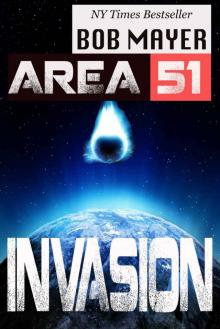 Invasion
Invasion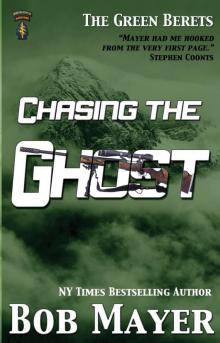 Chasing the Ghost
Chasing the Ghost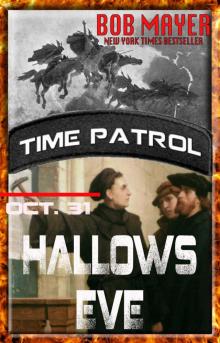 Hallows Eve
Hallows Eve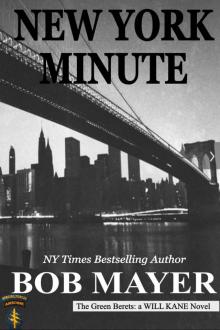 New York Minute
New York Minute Valentines Day
Valentines Day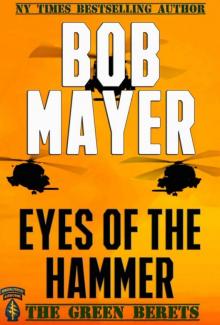 Eyes of the Hammer
Eyes of the Hammer Walk on the Wild Side
Walk on the Wild Side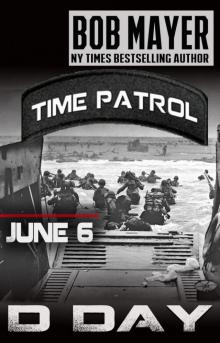 D-Day
D-Day Lawyers, Guns and Money
Lawyers, Guns and Money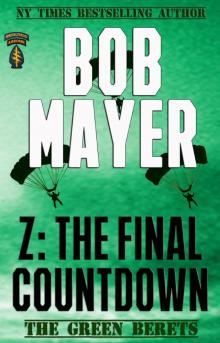 Z: The Final Countdown
Z: The Final Countdown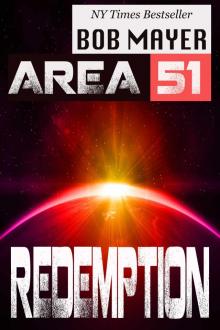 Redemption: Area 51, #10
Redemption: Area 51, #10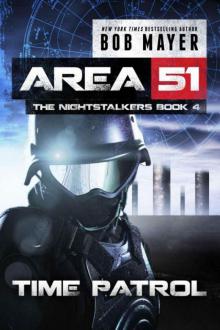 Time Patrol
Time Patrol Interstellar
Interstellar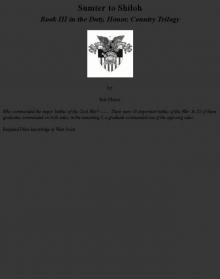 Sumter to Shiloh
Sumter to Shiloh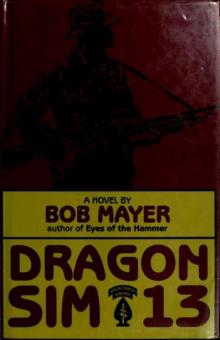 Dragon Sim-13
Dragon Sim-13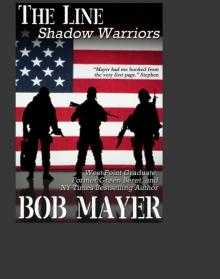 The Line
The Line Omega Missile (Shadow Warriors)
Omega Missile (Shadow Warriors)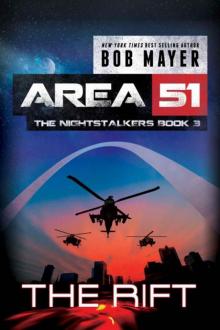 The Rift
The Rift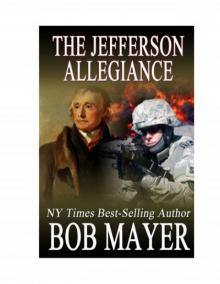 The Jefferson Allegiance
The Jefferson Allegiance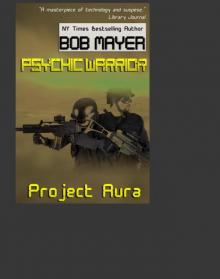 Project Aura
Project Aura Synbat
Synbat Ides of March (Time Patrol)
Ides of March (Time Patrol)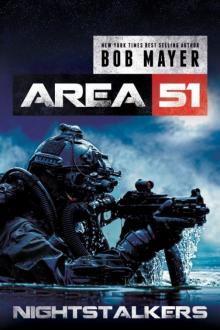 Nightstalkers a5-10
Nightstalkers a5-10 Lost Girls tc-2
Lost Girls tc-2 West Point to Mexico
West Point to Mexico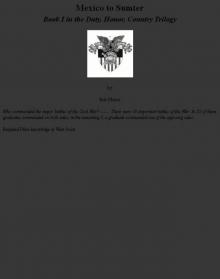 Mexico to Sumter
Mexico to Sumter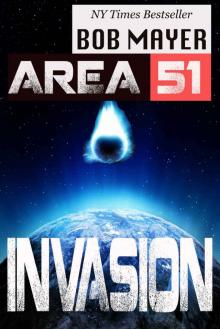 Area 51_Invasion
Area 51_Invasion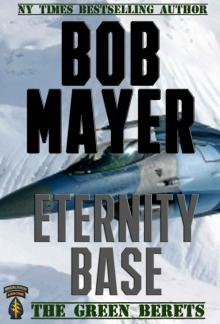 Eternity Base
Eternity Base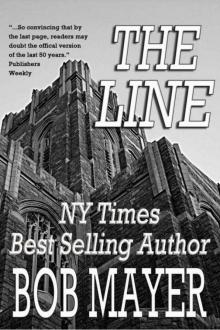 The Line bo-2
The Line bo-2 Atlantis Gate
Atlantis Gate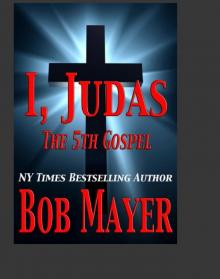 I, Judas
I, Judas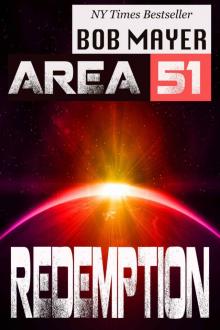 Area 51_Redemption
Area 51_Redemption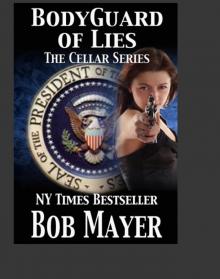 Bodyguard of Lies
Bodyguard of Lies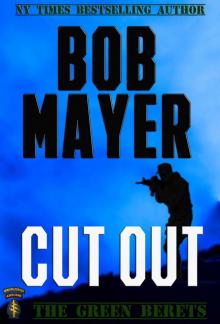 Cut Out
Cut Out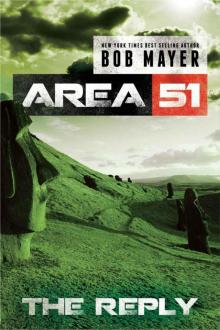 The Reply (Area 51 Series Book 2)
The Reply (Area 51 Series Book 2)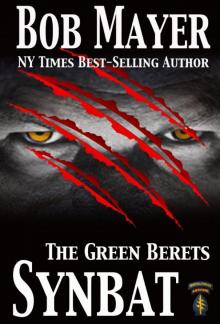 Synbat tgb-3
Synbat tgb-3 The Book of Truths a5tn-2
The Book of Truths a5tn-2 Eyes of the Hammer (The Green Beret Series)
Eyes of the Hammer (The Green Beret Series)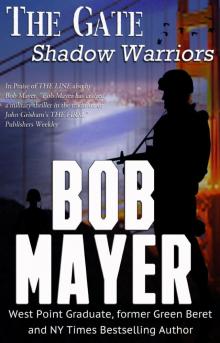 The Gate
The Gate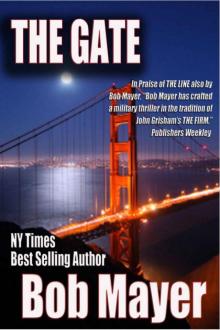 The Gate bo-1
The Gate bo-1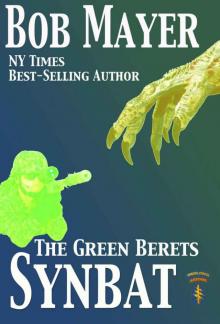 Synbat v5
Synbat v5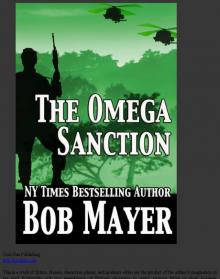 Omega Sanction
Omega Sanction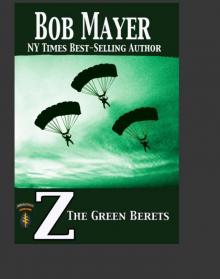 Z
Z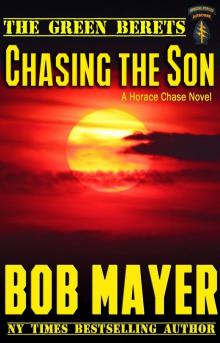 Chasing the Son
Chasing the Son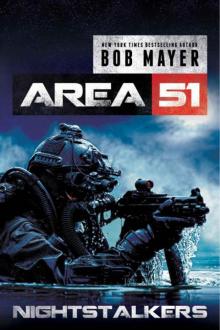 Nightstalkers
Nightstalkers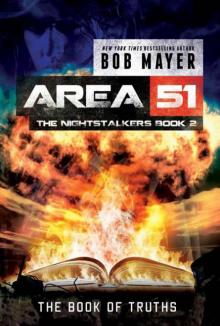 The Book of Truths
The Book of Truths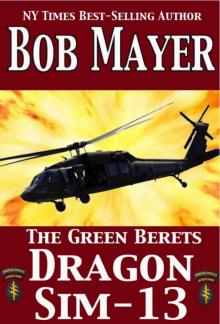 Dragon Sim-13 tgb-2
Dragon Sim-13 tgb-2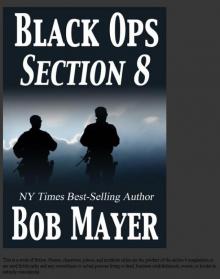 Section 8
Section 8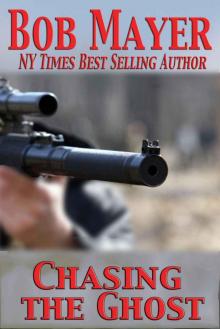 Chasing the Ghost v5
Chasing the Ghost v5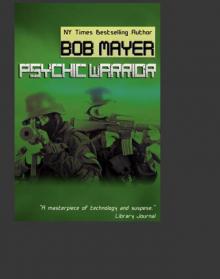 Psychic Warrior
Psychic Warrior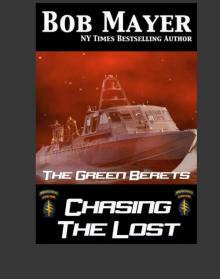 Chasing the Lost
Chasing the Lost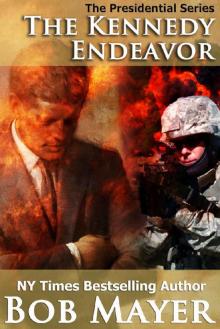 The Kennedy Endeavor (Presidential Series Book 2)
The Kennedy Endeavor (Presidential Series Book 2)